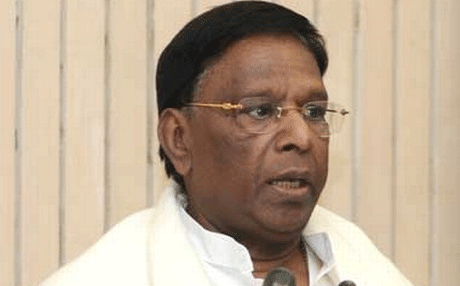
India's second moon mission, Chandrayaan-II, with a moon lander, will be a solo effort by India as the Russian Federal Space Agency (Roscosmos) and Indian Space Research Organisation (Isro) have not been able to get on the same page technologically.
India and Russia were jointly pursuing the Rs 425-crore Chandrayaan-II mission following a 2008 agreement in which Isro was to provide the geosynchronous satellite launch vehicle (GSLV) for the launch as well as the orbiter and rover, while the Russian agency was to provide the lander.
The mission, originally scheduled for 2013, may now happen around 2016, reliable sources told Deccan Herald.
Minister of State in the Prime Minister's Office V Narayansamy on Wednesday informed the Rajya Sabha that Russia was out of the Chandrayaan-II mission since certain changes suggested by them would lead to a major programmatic realignment.
“It is technically impossible to use the Indian launch vehicle for this mission,” Roscosmos officials told Deccan Herald.
While Isro had shown its capability for the moon orbiter (Chandrayaan-I), development of the rover module and on-board scientific instruments had made good progress, said Narayansamy.
Russia, on the other hand, encountered a problem consequent to the failure of its interplanetary mission Phobos-Grunt, which was Russia’s attempted sample return mission to Phobos, one of Mars’ moons. It failed about one-and-a-half years ago.
The mission also had aboard a Chinese Mars orbiter –– Yinghuo 1. The flight tests of the Phobos-Grunt spacecraft demonstrated the necessity to improve the reliability of the lunar lander that would eventually mean redesigning the lander's on-board control systems. “But changing the on-board control complex increases the weight of the lander. As a result, it is technically impossible to use the Indian launch vehicle for this mission,” said an official from the Russian agency.
“Rosсosmos did not leave the Chandrayaan-II project unilaterally. In a meeting with Isro officials in April, the Russian side offered to carry out the launch of the Russian lander with an Indian mini-rover in 2015, using the Russian launch vehicle,” said the Russian official.
“Alternatively, Roscosmos offered to carry out the launch of the Indian heavyweight rover as a part of the Russian Lander, using the Russian launch vehicle. Unfortunately, the position of the Indian side was not conveyed to us,” an official from the Russian space agency told Deccan Herald, Bangalore.
But Narayansamy said while Roscosmos suggested that Isro might provide the Indian rover for the launch scheduled in 2015 or 2017, the Russians also indicated that the 2015 opportunity involved mass limitation for the rover and higher risk.
Subsequently, a review by an expert panel, headed by former Isro chairman U R Rao, recommended indigenous development of the lander module. Experiments on the lander are being carried out, and the spacecraft is being reconfigured.
Rao said, “There was a failure that Russia experienced. After that, the lander has become heavier, which is not something we can carry on our launch vehicle.”
